Around the Thanksgiving holiday, a lot of decorations and advertisements feature a similar image of a turkey: It’s often a big male turkey, all puffed out and in full strut. And we all know that turkey’s saying “gobble gobble.”
If you were lucky enough to see a turkey in the wild on Thanksgiving Day, there’s little chance it would be puffed up and strutting, nor would it be gobbling. Those are primarily the spring breeding displays of male wild turkeys.
In the fall, wild turkeys behave quite differently. So how do wild turkeys spend Thanksgiving Day? Here’s a look at their fascinating behavior during autumn.
Turkeys of a Feather…Flock Together
My first wild turkey sighting came on a late fall day in the mid-80s, when I was deer hunting with my dad. We were about ready to call it a day, looking down into a wooded hollow in Central Pennsylvania. Suddenly, a line of dark forms appeared, moving slowly through the woods, stopping and looking every few steps.
At the time, turkeys were still a rare sight in our part of the state. (In fact, many friends and relatives doubted our story). I recall how big, how beautiful, they looked moving through the hardwoods. But what I mostly remember is how quiet they were. Leaves had piled on the forest floor, loud and crunchy. A lone squirrel sounded like a snowplow when it jumped around. But these turkeys scarcely made a sound.
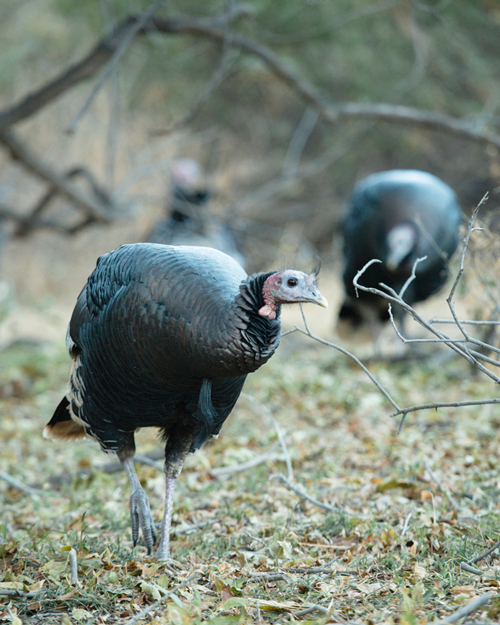
I’d later learn this silence was actually unusual. A flock of turkeys in the fall can be extremely noisy while calling and scratching. On that day, the first day of Pennsylvania’s popular deer season, the woods were full of people, and the turkeys were stealthy and alert.
As a hunter and naturalist, this encounter launched a lifelong interest in wild turkeys. I’ve spent a lot of time observing them. I’ve seen plenty of gobbling and strutting in the spring. I’ve seen turkeys mating, fighting, feeding, roosting and tending chicks. Their spring behavior gets all the attention, but I always find a special thrill watching them in the autumn.
The first thing to understand about fall turkey behavior is the social structure of flocks. Basically, turkeys of a feather flock together. Hen turkeys live in flocks with their female offspring. Oftentimes, several hens and their offspring will combine flocks, so it’s quite common to see 50 or more birds together. The Cornell Lab or Ornithology reports that some winter flocks can consist of 200 turkeys. Hens that were not successful hatching chicks may form smaller flocks with similar lone hens.
Male turkeys form their own flocks. Depending on population size, these too might be segregated by age classes. Young male turkeys, commonly called jakes, band together, and older males form their own groups.
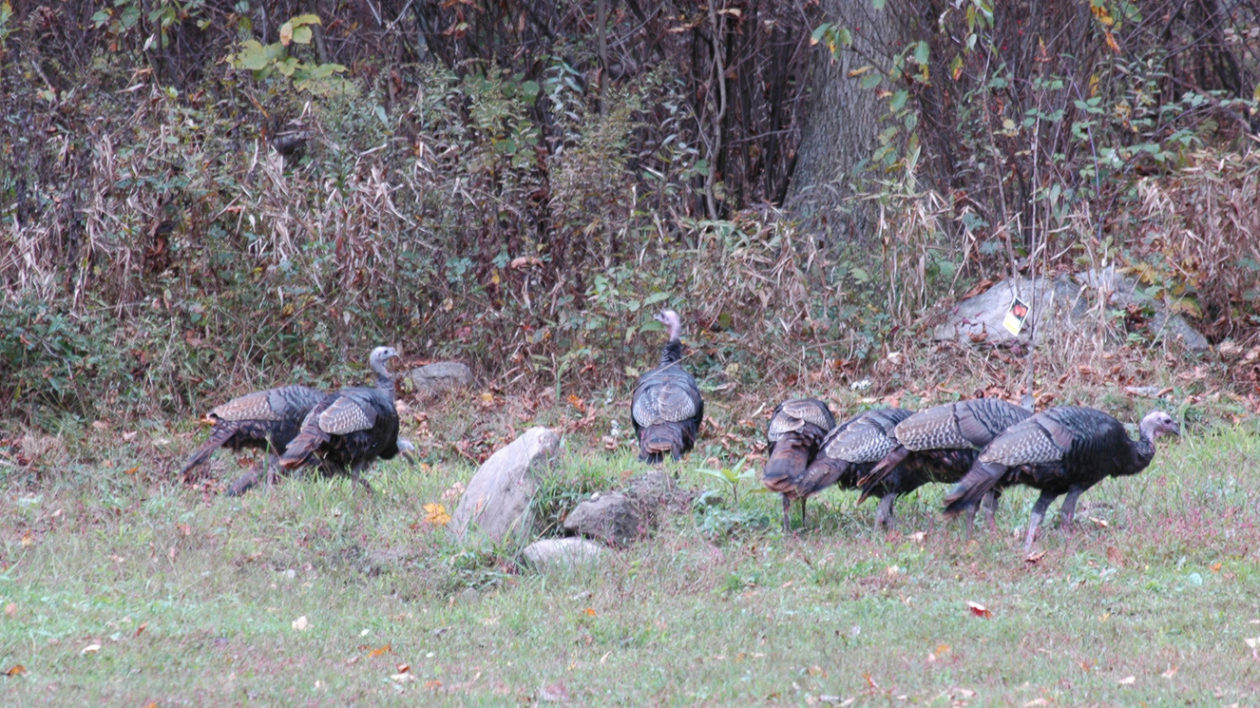
All these turkey flocks will likely be located in different parts of a forest. They don’t interact much at this time of year.
They do interact with each other within a flock. At this time of year, turkeys are always with the flock and call constantly each other to ensure they’re close by. They feed and call, feed and call. These calls are all quite soft, but you can often hear them in the hardwoods if you listen closely.
Say you’re out for a hike and you stumble into a flock of turkeys. They’ll run and fly in every direction. But within minutes, they’ll begin calling. Loudly. Hens make a harsher yelp, while young chicks give a higher-pitched call, often referred to as the kee-kee.
Sustainable Fare
What will be on your Thanksgiving table?
They will call to each other until the flock is reassembled. This may suggest an idyllic picture of a fall turkey flock, but let’s not get anthropomorphic. An important aspect of flock life is establishing dominance. Both male and female turkey flocks in the fall are full of squabbles, dominance displays and even fights – all establishing who is at the top of the pecking order. This is important in determining breeding rank come spring.
Occasionally, you will even hear a particularly aggressive male turkey let out a full-throated gobble. This is again establishing dominance, but it’s far less common than in the spring, when male turkeys gobble loudly and frequently.
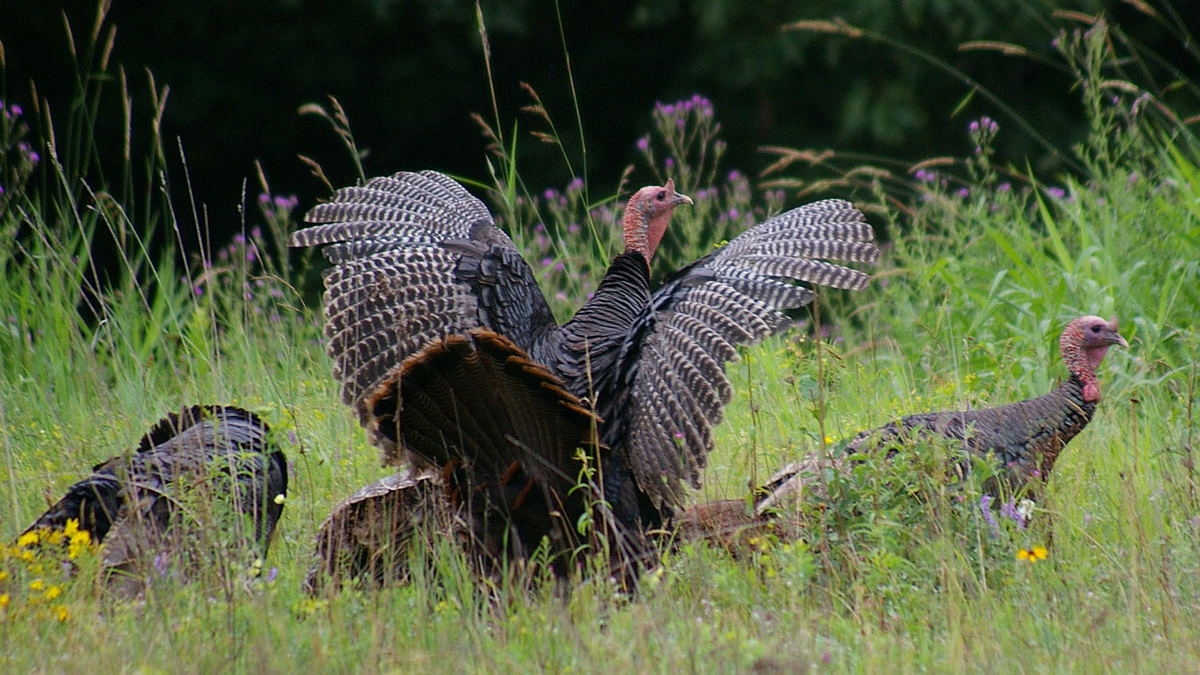
Of Acorns and Roost Trees
Turkeys are quite habitual at this time of year, often living in a defined area and even following a similar route each day. As with all wildlife, where they’re found is determined largely by food and cover.
Turkeys are noted omnivores, as ornithologist Joe Smith has written previously on Cool Green Science. They’ll eat everything from fruits to frogs. But they do have preferred foods. In the summer, they can often be found in meadows, feasting on grasses and insects like grasshoppers.
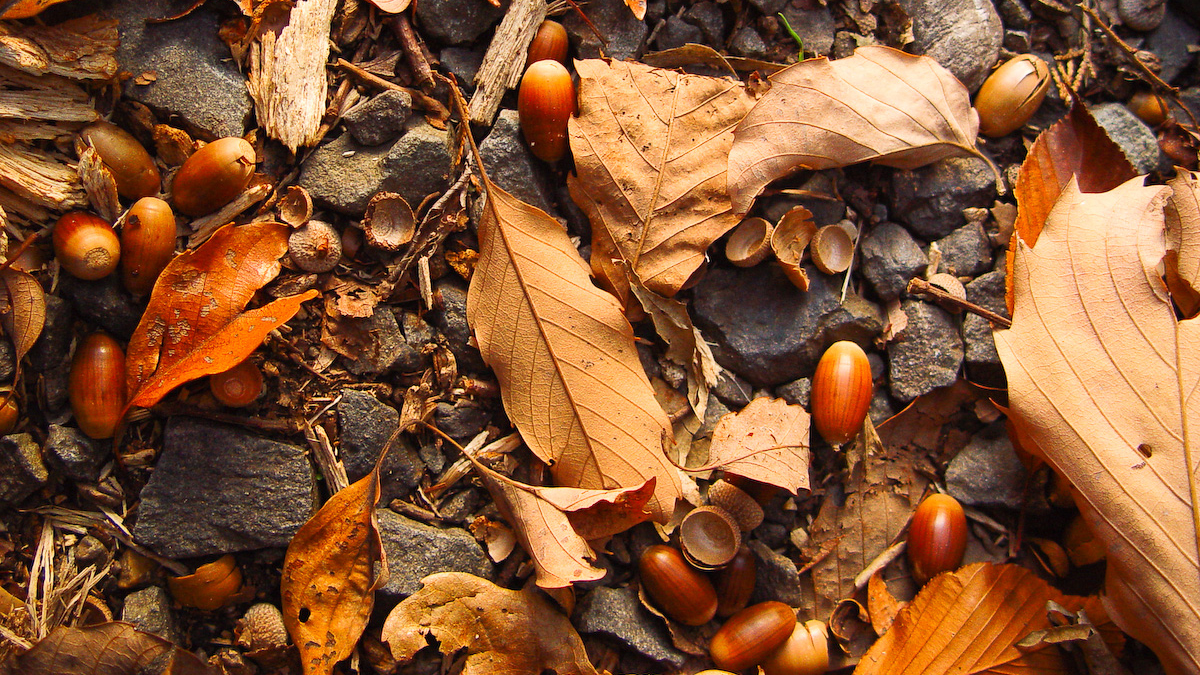
In the fall, they will still haunt fields, particularly those with dropped corn or grain. But in much of the turkey’s range, they shift to the acorns and nuts – called mast by land managers – of hardwood forests. Flocks may move several miles to find acorn-rich environments. Acorns are calorie rich and turkeys spend a lot of time feasting.
In fact, I often hear them scratching long before I hear them calling. They dig through the leaves, with often large bare spots of ground remaining. These scratchings are a great way to locate a fall turkey flock.
Turkeys are very alert birds, with excellent eyesight. In the daytime, it would be difficult for a predator to stalk a flock of 30 turkeys. There’s always at least one scanning the forest. But when they rest at night, they’re vulnerable. A turkey is a large, protein-rich dinner for a coyote, fox or bobcat. And so the turkey roosts in trees, where it’s safe from ground-dwelling predators.
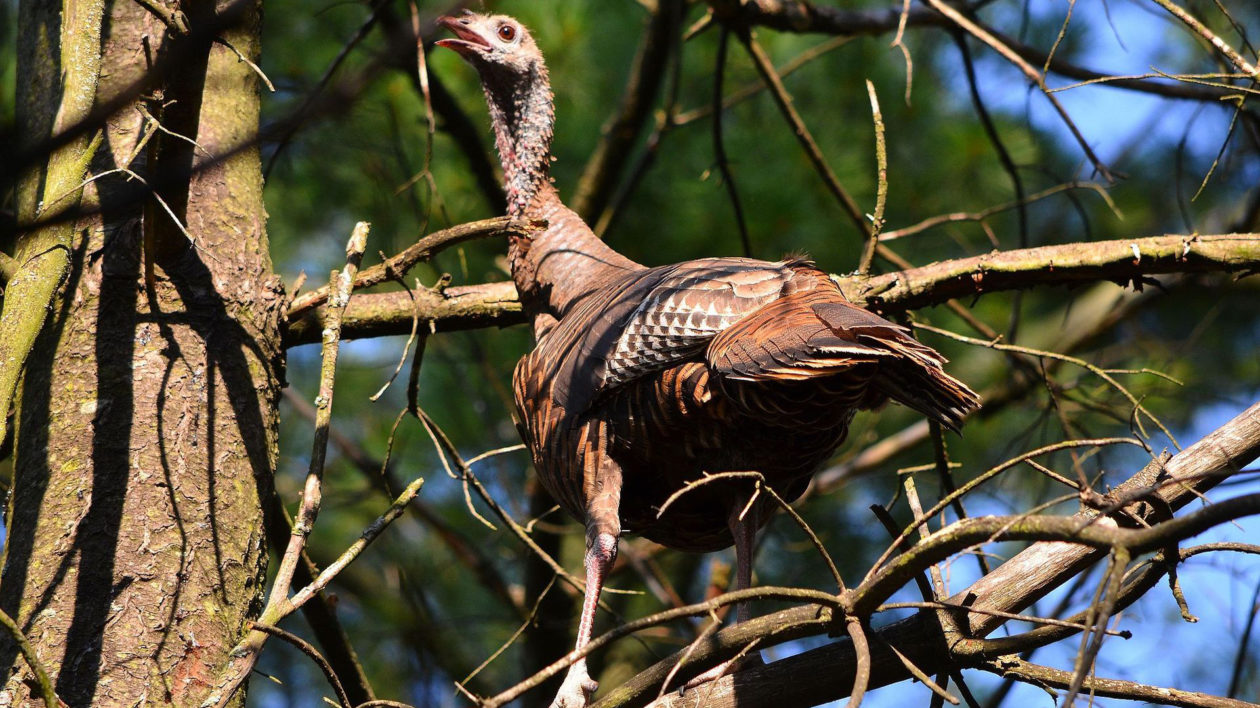
A turkey is a big bird, and it needs fairly large trees for roosts. I have noticed that gobblers, in particular, seem to roost in huge trees with a great vantage point, like on a ridge or along a river. I haven’t seen any literature to back that up, but it’s been my observation in a variety of habitats.
Turkeys can fly surprisingly fast in open terrain, but maneuvering is not necessarily a strength. I always find it entertaining to watch them fly off a roost at dawn. Some will fly over my head with an audible whoosh, sounding like a hang glider. But many will bounce into branches and trees as they descend to the forest floor, a true crash landing.
If you find a patch of forest with plentiful acorns and some large trees, nearly anywhere in the United States, chances are there are some turkeys nearby.
Given their fall antics – the scratching, roosting, and dominance fights – they’re spectacular birds to watch. Since they’re abundant, and increasingly found even close to towns and cities, turkey spotting is a widely available adventure. You will need to be extremely quiet to catch a glimpse.
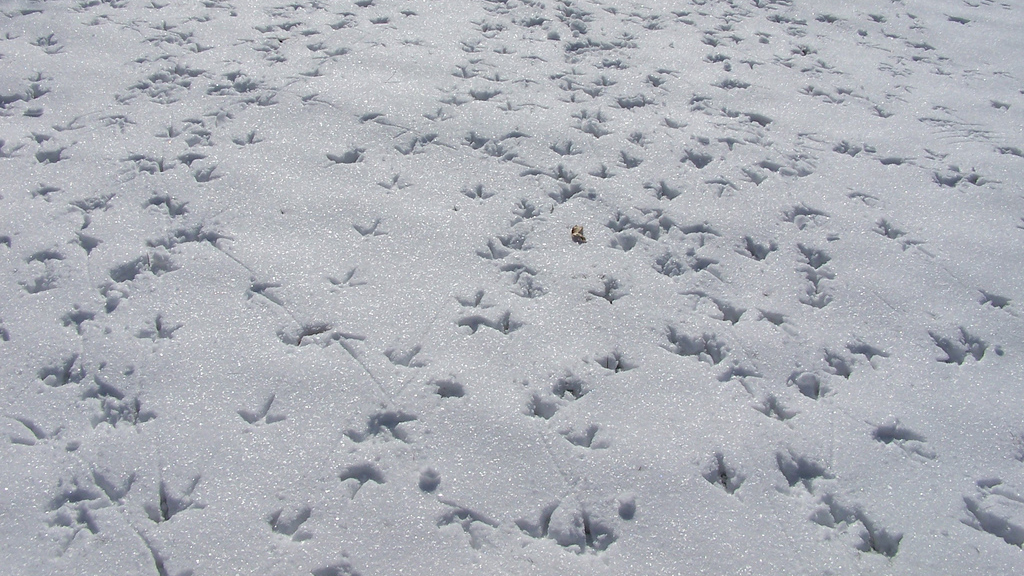
If you’re lucky enough to have a slight snow fall, a flock of turkeys is also easy and fun to track. Their large feet are unmistakable, and due to the large number of birds moving together, they’re incredibly easy to follow. You will see how the individual birds move, sometimes straying a bit too far, then moving back. You’ll see lots of scratchings and perhaps where wings brushed snow during fights.
Follow along and you’ll see exactly how turkeys spend their days.
If you’re looking for a great adventure for Turkey Day, head outside for one of the greatest shows in the woods.
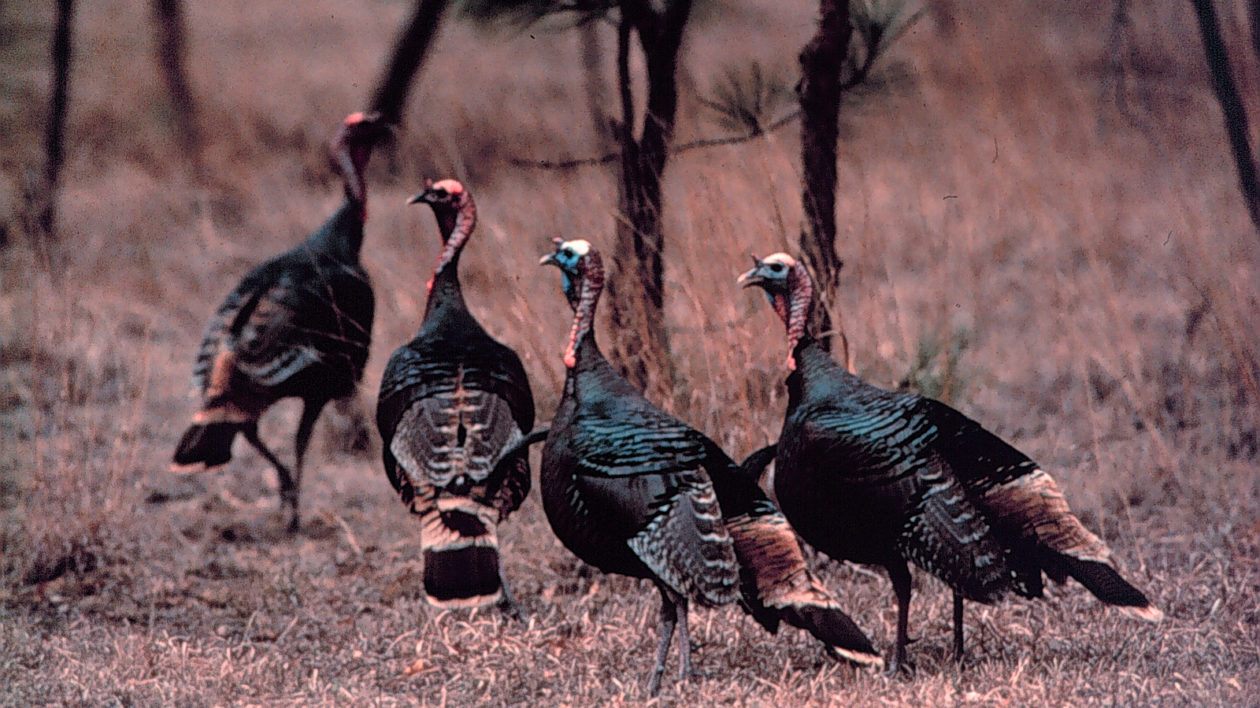
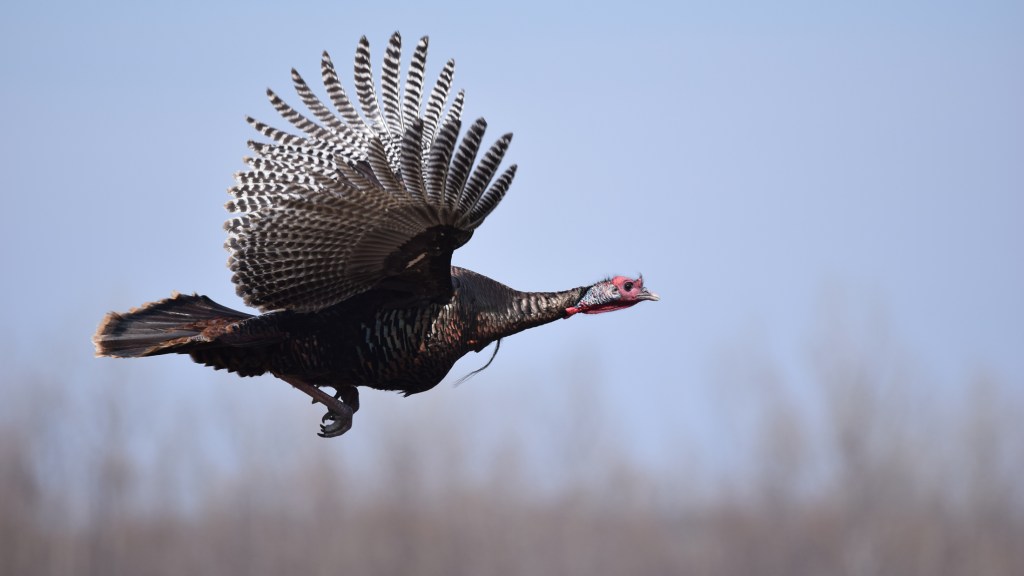



My family and I live at the edge of a large forested area. This morning we watched with delight as 9 young male (we think!) wild turkeys took dust baths in our backyard which has been churned up by machines clearing trees felled by hurricaine Helene. We didn’t mind one bit about the yard as we watched these turkeys living their best wild life!
Early this evening I saw three male turkeys with their breeding feathers on display. I was surprised. It’s October! A bit later two turkeys were fighting in my hydrangea bushes. I rapped on the window and they flew over to the lawn, continuing their fighting. Three other turkeys just watched. I have never seen this type of behavior in fall.